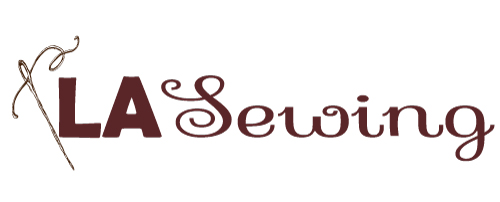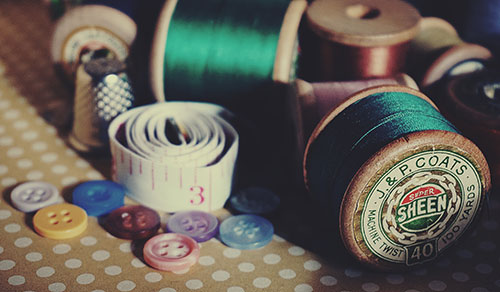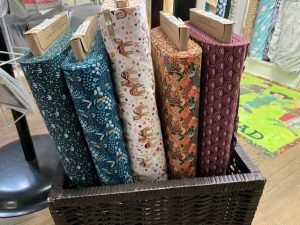Whether you are a quilter or a garment sewer, here is a list of sewing terms you should know.
- Bias – the diagonal direction of the fabric
- Cross Grain/Crosswise Grain/Weft/Fill – threads that run from left to right; always perpendicular to the selvage
- Drape – the way that the fabric falls and forms to the body
- Fabric Grain – the direction of the threads used in weaving the fabrics
- Fold Line – refers to folding right sides together to prepare fabric for cutting and pattern piece arrangement
- Nap – the direction that fibers in textured fabrics lay down
- Right Side – The front side of fabric
- Selvage – the tightly woven edge of fabric in a roll that doesn’t fray before being sold
- Wrong Side – the backside of fabric
Garment Construction Terms
- Clip – small snips placed in curved or angled areas of pattern pieces to add ease and keep the area smooth
- Cutting Line – solid lines printed on patterns that show where to cut out the pattern
- Darts – triangular wedge-shape that’s folded and sewn into areas that have more fullness to achieve a better fit (often found at the bust, waist, and/or hips)
- Dots – marks placed at seam intersections, dart points, collars, and more on pattern pieces to locate where garment pieces should line up
- Cut On Fold Symbol – an open ended rectangle with a double edged arrow; this symbol specifies when a piece needs to be cut on fold
- Ease – space in a pattern allotted for fit and style, according to the body’s specific measurements
- Grade/Layer – to increase or decrease the sample size of a pattern to make a complete size range
- Hem – bottom edge of a garment that is raw and then finished by being folded and sewn
- Iron – to move the iron backward or forward against a finished garment in order to create crisp seams and help the garment lay correctly
- Layout – a printed portion found in pattern instructions that helps to organize pattern pieces when placing on fabric for cutting
- Marking/Tracing – to transfer trued lines and guidelines from muslin or pattern over to pattern paper using a marking tool or tracing aid
- Notch – triangle shaped cuts or marks placed into pattern pieces that help align pieces for sewing
- Pivot – a sewing technique used for corners where the needle is lowered into the fabric and the fabric is rotated to the desired position
- Pre-shrink – to launder fabric normally before sewing if the content is prone to shrinkage
- Press – to lift and lower an iron onto pattern pieces to release wrinkles or to set in the seam
- Seam Allowance – the width of fabric between the seam line and the edge of the fabric that allows room for fraying and wearing ease
- Seam – a series of stitches that holds two or more pieces of fabric together
- Tack – a stitch type used for reinforcement at points of stress such as pockets or zippers
- Trim – to cut down the sewn seam allowance to reduce bulk
- Yoke – an element added for fit that is usually added across the shoulders or to the waistline


